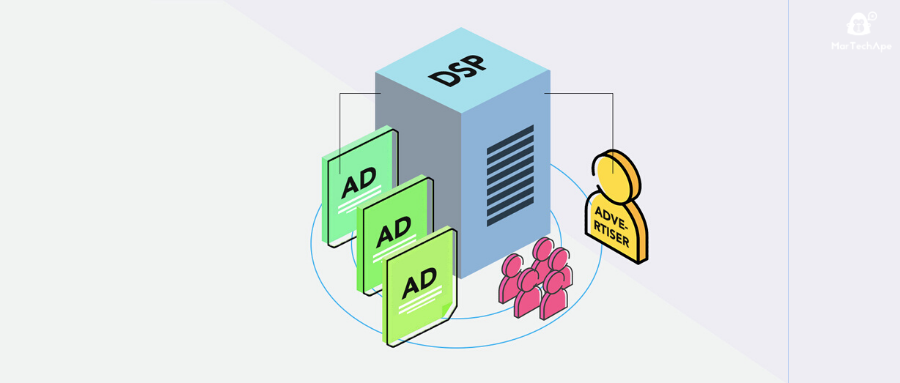
In today’s digital marketing landscape, businesses need to adopt advanced tools and strategies to stay ahead of the competition. One of the most effective combinations in the world of digital advertising is integrating Demand-Side Platforms (DSP) with Performance Marketing. This integration allows advertisers to optimize their ad spend, improve targeting, and drive better results. In this comprehensive guide, we will explore the core concepts of DSP advertising platforms and performance marketing, how they complement each other, and best practices for integrating them to maximize marketing success.
1. Introduction to DSP Advertising Platforms and Performance Marketing
What Are DSP Advertising Platforms?
A Demand-Side Platform (DSP) is a technology platform that allows advertisers to automate the purchasing of digital ad inventory through real-time auctions. By using a DSP, advertisers can access a variety of advertising exchanges, networks, and supply-side platforms, enabling them to buy and place ads across multiple platforms such as social media, mobile apps, and websites. The primary advantage of a DSP is its ability to optimize ad placements using data and algorithms, providing more precise targeting and greater cost-efficiency.

Understanding Performance Marketing
Performance Marketing is a results-driven approach to digital advertising where advertisers pay for specific actions taken by users, such as clicks, conversions, or sales. Unlike traditional media, where advertisers pay based on impressions or reach, performance marketing focuses on measurable outcomes, ensuring that every dollar spent is directly tied to a tangible result. This approach allows businesses to evaluate their return on investment (ROI) with greater accuracy.
The Relationship Between DSP and Performance Marketing
Integrating DSP advertising platforms with performance marketing creates a powerful synergy. DSPs provide the technology to buy and place ads efficiently, while performance marketing ensures that these ads generate measurable results. By combining the two, businesses can leverage real-time data and analytics to optimize their campaigns, ensuring maximum ROI and achieving their marketing goals faster and more efficiently.
2. How DSP Advertising Platforms Enhance Performance Marketing
Precision Targeting
One of the key advantages of DSPs is their ability to enable highly precise targeting. Through advanced data analytics and user behavior tracking, DSP platforms can segment audiences based on demographic data, interests, online behavior, geographic location, and much more. This granular targeting ensures that ads are served to the most relevant users, reducing wasted impressions and improving the chances of conversion.
For performance marketers, this means that their budget is spent on reaching the right audience at the right time. Instead of broad targeting, which can result in wasted spend, DSP platforms ensure that ads are shown to users who are more likely to take the desired action, whether it’s clicking on an ad or making a purchase.
NetMarvel, a global one-stop performance marketing service platform, helps advertisers achieve just that by gathering high-quality DSP traffic and In-App traffic from across the world. By leveraging NetMarvel’s expansive reach, advertisers can seamlessly access global markets and efficiently scale their campaigns.
Real-Time Optimization and Data Feedback
Another significant advantage of using DSPs in performance marketing is the ability to optimize campaigns in real time. As DSPs collect and analyze data, they provide actionable insights into how an ad is performing. Advertisers can adjust their bids, targeting parameters, and creative content based on this data, ensuring that the campaign is continually refined for optimal performance.
For example, if a particular ad variation is performing better than others, the DSP can automatically allocate more budget to that ad, while reducing spend on underperforming ads. Similarly, if certain segments of the target audience are converting better, the DSP can focus more heavily on those segments. This dynamic optimization allows performance marketers to continuously fine-tune their campaigns, ensuring that they are always driving the best possible results.
Cost Efficiency
By combining DSP technology with performance marketing, advertisers can achieve a higher level of cost efficiency. With real-time optimization and precise targeting, ad budgets are spent more effectively. Performance marketing’s focus on measurable outcomes ensures that each dollar spent is directly tied to a result, whether it’s a click, conversion, or sale.
Moreover, DSPs use auction-based buying models, such as Real-Time Bidding (RTB), where advertisers only pay for the impressions that meet their targeting criteria. This prevents overpaying for ads that aren’t likely to convert and reduces the risk of wasted ad spend.
3. Best Practices for Integrating DSP Advertising Platforms with Performance Marketing
Choosing the Right DSP Platform
The first step in successfully integrating DSPs with performance marketing is selecting the right DSP platform. The ideal platform should provide advanced targeting options, robust data analytics, and integration with various ad networks and exchanges. Additionally, the DSP should support multiple ad formats, including display ads, video ads, mobile ads, and native ads, to ensure flexibility across campaigns.
When evaluating DSPs, it’s important to consider the platform’s user interface, reporting capabilities, and customer support. Make sure the DSP is aligned with your specific marketing goals, whether it’s increasing brand awareness, driving website traffic, or generating direct conversions.
Monitor and Adjust Campaigns Regularly
Performance marketing thrives on continuous optimization, and integrating DSPs requires regular monitoring and adjustments. The real-time data provided by DSPs allows performance marketers to quickly identify underperforming elements of their campaigns and make adjustments. This might include altering bid strategies, modifying targeting parameters, or testing different creative assets.
Regular A/B testing is another essential practice. By testing different ad creatives, landing pages, or audience segments, you can identify the most effective combinations and maximize campaign performance. The ability to adjust on the fly based on data ensures that your campaigns are always evolving and improving.
NetMarvel supports this optimization process by providing valuable data insights and analytics, allowing marketers to continuously refine their strategies and achieve better performance across multiple global markets.
Cross-Channel Integration
While DSPs allow advertisers to manage ads across multiple platforms, performance marketers should also consider how to integrate their efforts across various channels. Whether it’s through social media, programmatic display ads, or search engines, ensuring that your DSP and performance marketing strategies align across all channels is crucial for driving comprehensive results.
A cross-channel approach allows businesses to reach their audience at different touchpoints in the customer journey. For example, a user who interacted with a display ad might later see a retargeted offer on social media or a search engine. By ensuring seamless integration, businesses can improve the customer experience and increase the likelihood of conversion.
Leverage Advanced Reporting and Analytics
To make the most of the DSP and performance marketing integration, it’s essential to leverage the advanced reporting and analytics capabilities provided by both the DSP and performance marketing tools. This data helps you understand the effectiveness of your campaigns, identify areas for improvement, and make data-driven decisions.
Analytics tools can track key performance metrics such as Cost Per Acquisition (CPA), Customer Lifetime Value (CLV), Return on Ad Spend (ROAS), and conversion rates. By analyzing these metrics, you can identify what’s working and what’s not, allowing you to refine your approach and maximize ROI.
Conclusion
Integrating DSP advertising platforms with performance marketing services is a game-changer for businesses looking to maximize the effectiveness of their digital advertising efforts. By combining the advanced targeting and real-time optimization capabilities of DSPs with the measurable, results-driven approach of performance marketing, advertisers can achieve better ROI, reduce wasteful spend, and drive more meaningful results.
To make this integration work, businesses must choose the right DSP platform, continuously optimize their campaigns, and ensure cross-channel alignment. By leveraging data, testing different strategies, and utilizing advanced reporting tools, advertisers can unlock the full potential of DSPs and performance marketing, ensuring that their campaigns deliver measurable and profitable outcomes. Platforms like NetMarvel, which gather high-quality global DSP traffic and in-app traffic, offer the resources and capabilities needed to succeed on a global scale, helping businesses scale and achieve growth across regions.








